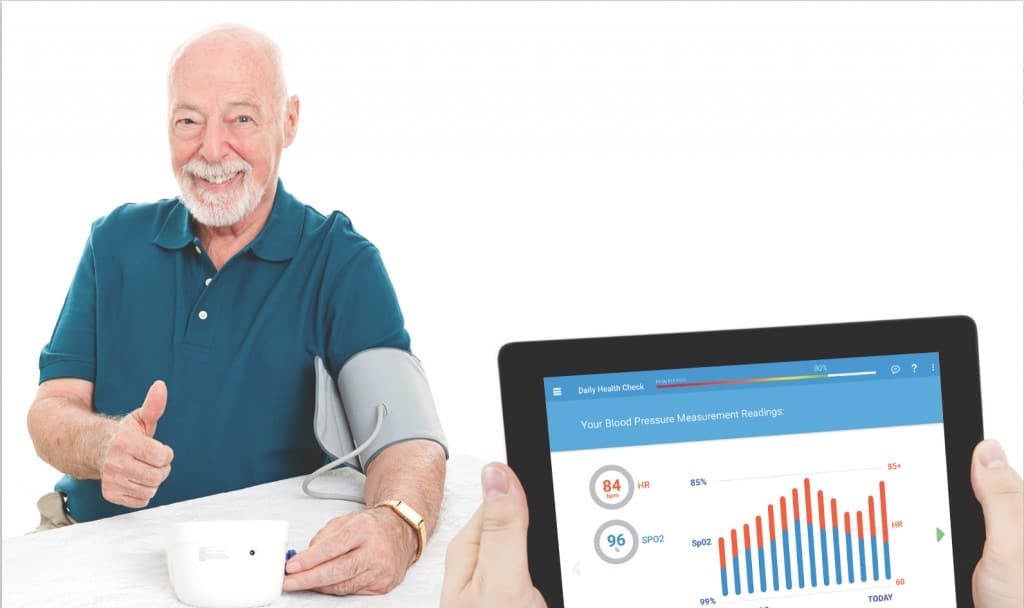Blog
The Role of Telehealth in a Consumer Directed Care Model

The latest phase of Consumer Directed Care (CDC) implementation for community aged care promotes a market-driven approach that empowers clients; it emphasizes clients’ right to have more visibility, engagement, and arguably the most integral component—choice in the care and services they receive.
Most aged care providers are poorly positioned to accommodate this shift due to lack of transparency and inadequate data management tools. Meanwhile, the availability of powerful and affordable aged care information and communication technology, both for providers and clients, has raised the capacity to gather and process more information, communicate more effectively, and monitor the quality of care delivered.
Adapting to the latest phase of the CDC health system requires new tools and streams of data to enable a truly client-focused approach to providing care. Considering clients are active participants in the care continuum, those back office and electronic health systems that operate in a cloud-based computing model with consumer facing views, real-time information and telehealth functionality will deliver significant benefits in regards to efficiency of the operating model and the ability to demonstrate transparency of information, and improved outcomes.
Providers considering implementing a solution with telehealth capabilities are ahead of the curve and well-aligned for success in the new client-focused care model.
Clinical information on vitals, fall detection, GPS location etc. streaming in real-time to the home care EHR offers enormous potential to providers taking on CDC. The Home Care Packages Program also supports the use of telehealth, making technologies such as remote monitoring and video conferencing more conventional services.
Beyond the obvious persistent connectivity to clients, incoming telehealth data can be mined and used in big data settings to enable decision support scenarios. The peace of mind for family members when providers offer virtual care can often permit clients to remain in their home longer and in greater comfort. Here are some of the additional benefits associated with telehealth enabled solutions:
Increased access to basic care
Clients who live in rural or remote areas have increased access to care with the help of video conferencing, remote monitoring and virtual care technologies. Providers can perform off-site visits, and receive real-time vitals remotely, resulting in more convenient, timely access to care by eliminating the element of travel. Providers can experience increased productivity and more efficient case management, enabling them to care for a larger group of clients in a shorter time frame; a necessary improvement considering the shortage of care providers.
Improved client care
While virtual care can’t replace face-to-face visits between clients and providers, it does serve as an extension to traditional care methods. There’s an increasing amount of evidence linking video conferencing to greater overall client satisfaction, largely due to its convenience and improved communication. Video conferencing enables better quality of care through greater speed, access, and frequency of client/provider contact.
Reduced rates of hospitalization and readmissions
With the help of video conferencing, care workers can provide pre-emptive care or feedback to their clients. Telehealth technology enables faster responses to client’s care needs and questions and even allows providers to screen out minor issues that would typically result in hospital admissions.
According to an OTN Telehomecare program, readmissions can be reduced by 71%, while other initiatives have encountered similar significant outcomes.
Competitive advantage for providers
Telehealth technologies present a new opportunity for providers to offer new services to clients and their families, while lowering the cost of care. This is a unique way for providers to stand out from their competitors and offer a higher quality of care while improving client outcomes.
CDC implementation, client engagement, and calls for data transparency, is raising the importance of client-generated health data, remote monitoring, virtual care, and other innovative client-centric approaches to care delivery.
Aged care providers who consider making enhancements to their current processes or software solutions to include telehealth will not only be opening the door to improved client experiences, but they will be in a greater position to succeed with the implementation of CDC and could see immediate cost savings. This is especially true when purchasing a telehealth solution with an already integrated clinical solution.
AlayaCare is a leading provider of an end-to-end home care software platform that seamlessly integrates with our innovative telehealth technologies. Check out our solution in a personal demo today, and see how our technologies can improve client outcomes.


